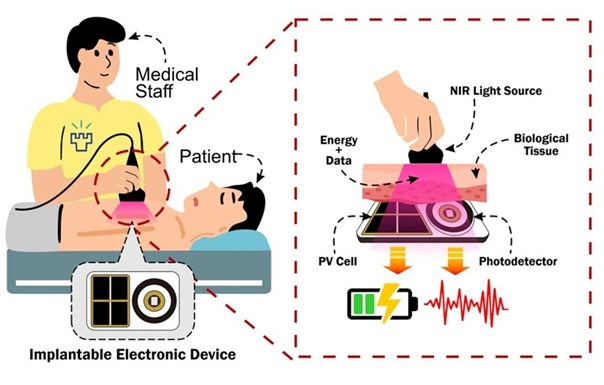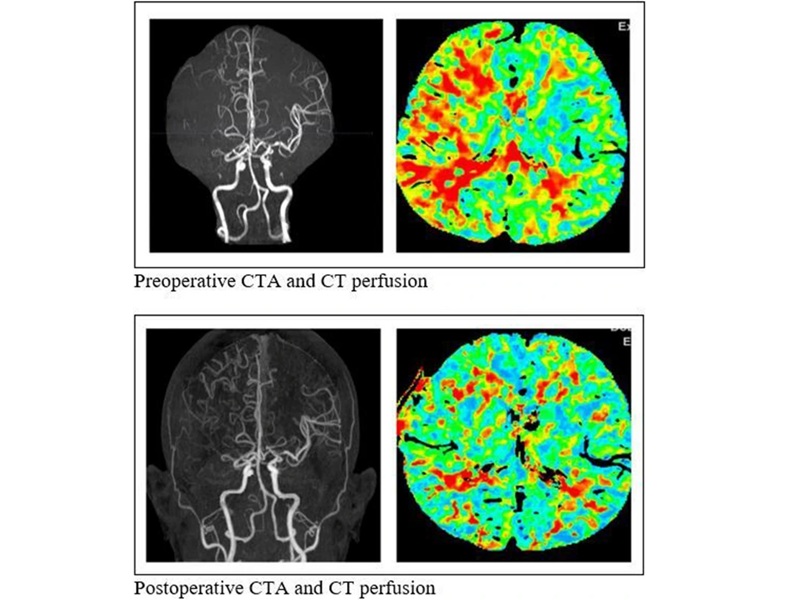Cardiologist Care Reduces Incipient AF Mortality
|
By HospiMedica International staff writers Posted on 12 Dec 2017 |
Specialist care associated is associated with a significantly lower death rate in patients newly diagnosed with atrial fibrillation (AF), according to a new study.
Researchers at the University of Toronto (Canada), the Institute for Clinical Evaluative Sciences (ICES; Toronto, Canada), and other institutions conducted a retrospective study of adult patients with new-onset AF in Ontario (Canada) from 2010 to 2012, in order to assess the association between cardiologist care and clinical outcomes. Patients who saw a cardiologist within one year of initial diagnosis were matched to patients who did not. Main outcomes and measures included death, hospitalization for AF, stroke syndromes, bleeding, and heart failure.
The results revealed that the majority (85%) of new-onset AF patients saw a cardiologist within the year. Cardiologist care within the first year of diagnosis was associated with a lower rate of death (5.3% versus 7.7%) than in those who did not seek care, despite increased hospitalizations for AF (17.9% versus 8.2%), stroke syndromes (1.7% versus 0.5%), bleeding (3.1% versus 2.0%), and heart failure (3.2% versus 1.4%). The results indicate that one in 15 patients with new-onset AF died within a year of the diagnosis. The study was published in the December 2017 issue of the Canadian Journal of Cardiology.
“Variations in AF care across medical specialties are well known. Other than stroke prevention therapy, no other therapy has been associated with improved survival in patients with AF,” said lead author cardiologist Sheldon Singh, MD, of the University of Toronto. “Heart failure and sudden death account for 35-50% of AF deaths, so we hypothesized that comprehensive cardiovascular care beyond stroke prevention may improve overall survival in AF patients.”
“The most startling finding from this study is the high rate of death in the cohort overall. Therefore, a new diagnosis of AF, while not immediately life-threatening, should be regarded as an important marker of near-term risk of cardiovascular events,” commented Stephen Wilton, MD, of the Libin Cardiovascular Institute of Alberta (Calgary, Canada), in an accompanying editorial. “This observation alone provides a potential rationale for desiring early cardiovascular specialist evaluation for these patients.”
AF occurs when the heart's two upper chambers beat erratically. In one form, paroxysmal AF, patients have bouts of erratic beats that begin spontaneously and usually last less than a week. It can lead to serious adverse events such as thrombi traveling from the heart to obstruct arteries supplying the brain, causing stroke, or other parts of the body causing tissue damage.
Related Links:
University of Toronto
Institute for Clinical Evaluative Sciences
Researchers at the University of Toronto (Canada), the Institute for Clinical Evaluative Sciences (ICES; Toronto, Canada), and other institutions conducted a retrospective study of adult patients with new-onset AF in Ontario (Canada) from 2010 to 2012, in order to assess the association between cardiologist care and clinical outcomes. Patients who saw a cardiologist within one year of initial diagnosis were matched to patients who did not. Main outcomes and measures included death, hospitalization for AF, stroke syndromes, bleeding, and heart failure.
The results revealed that the majority (85%) of new-onset AF patients saw a cardiologist within the year. Cardiologist care within the first year of diagnosis was associated with a lower rate of death (5.3% versus 7.7%) than in those who did not seek care, despite increased hospitalizations for AF (17.9% versus 8.2%), stroke syndromes (1.7% versus 0.5%), bleeding (3.1% versus 2.0%), and heart failure (3.2% versus 1.4%). The results indicate that one in 15 patients with new-onset AF died within a year of the diagnosis. The study was published in the December 2017 issue of the Canadian Journal of Cardiology.
“Variations in AF care across medical specialties are well known. Other than stroke prevention therapy, no other therapy has been associated with improved survival in patients with AF,” said lead author cardiologist Sheldon Singh, MD, of the University of Toronto. “Heart failure and sudden death account for 35-50% of AF deaths, so we hypothesized that comprehensive cardiovascular care beyond stroke prevention may improve overall survival in AF patients.”
“The most startling finding from this study is the high rate of death in the cohort overall. Therefore, a new diagnosis of AF, while not immediately life-threatening, should be regarded as an important marker of near-term risk of cardiovascular events,” commented Stephen Wilton, MD, of the Libin Cardiovascular Institute of Alberta (Calgary, Canada), in an accompanying editorial. “This observation alone provides a potential rationale for desiring early cardiovascular specialist evaluation for these patients.”
AF occurs when the heart's two upper chambers beat erratically. In one form, paroxysmal AF, patients have bouts of erratic beats that begin spontaneously and usually last less than a week. It can lead to serious adverse events such as thrombi traveling from the heart to obstruct arteries supplying the brain, causing stroke, or other parts of the body causing tissue damage.
Related Links:
University of Toronto
Institute for Clinical Evaluative Sciences
Latest Critical Care News
- E-Tattoos Harvest Energy and Monitor Health in Real Time
- Focused Ultrasound Tricks Tumors into Marking Themselves for Destruction
- World's Smallest Programmable Robot Opens Up New Possibilities in Medicine
- Remote Ventilate View Platform Enables Real-Time Monitoring of Patient-Ventilator Asynchrony
- Soft “Cyborg” Cardiac Patches Improve Stem Cell Heart Repair
- Soft Wearable System Offers Continuous Wireless Monitoring of Neonatal Health
- AI-Enhanced Wearables Could Transform Type 2 Diabetes and Prediabetes Care
- Breathable Electronic Skin Paves Way for Next-Generation Wearable Devices
- AI Transforming Colon Cancer Diagnosis
- Ventricular Assist Device Offers Long-Term Use in Children Waiting for Donor Heart
- Precision Approach Improves Immunotherapy Effectiveness for ICU Patients with Sepsis
- Soft Robots Could Donate Their Heart to Humans
- Bioadhesive Strategy Prevents Fibrosis Around Device Implants on Peripheral Nerves
- Miniature Non-Invasive Robotic Catheters to Improve Infertility Treatments
- Stick-On Patch Monitors Baby's Movements In Utero
- EEG-Based AI Technology Accurately Diagnoses Alzheimer’s and Dementia
Channels
Surgical Techniques
view channel
NIR Light Enables Powering and Communicating with Implantable Medical Devices
Implantable medical devices rely on wireless communication and long-lasting power sources to function safely inside the body, yet existing radio-based methods raise concerns around security, interference,... Read more
Simple Bypass Protocol Improves Outcomes in Chronic Cerebral Occlusion
Chronic cerebral arterial occlusion and moyamoya disease are major causes of ischemic stroke, particularly in regions where access to advanced diagnostic tools is limited. Assessing cerebral blood flow... Read morePatient Care
view channel
Revolutionary Automatic IV-Line Flushing Device to Enhance Infusion Care
More than 80% of in-hospital patients receive intravenous (IV) therapy. Every dose of IV medicine delivered in a small volume (<250 mL) infusion bag should be followed by subsequent flushing to ensure... Read more
VR Training Tool Combats Contamination of Portable Medical Equipment
Healthcare-associated infections (HAIs) impact one in every 31 patients, cause nearly 100,000 deaths each year, and cost USD 28.4 billion in direct medical expenses. Notably, up to 75% of these infections... Read more
Portable Biosensor Platform to Reduce Hospital-Acquired Infections
Approximately 4 million patients in the European Union acquire healthcare-associated infections (HAIs) or nosocomial infections each year, with around 37,000 deaths directly resulting from these infections,... Read moreFirst-Of-Its-Kind Portable Germicidal Light Technology Disinfects High-Touch Clinical Surfaces in Seconds
Reducing healthcare-acquired infections (HAIs) remains a pressing issue within global healthcare systems. In the United States alone, 1.7 million patients contract HAIs annually, leading to approximately... Read moreHealth IT
view channel
EMR-Based Tool Predicts Graft Failure After Kidney Transplant
Kidney transplantation offers patients with end-stage kidney disease longer survival and better quality of life than dialysis, yet graft failure remains a major challenge. Although a successful transplant... Read more
Printable Molecule-Selective Nanoparticles Enable Mass Production of Wearable Biosensors
The future of medicine is likely to focus on the personalization of healthcare—understanding exactly what an individual requires and delivering the appropriate combination of nutrients, metabolites, and... Read moreBusiness
view channel
Philips and Masimo Partner to Advance Patient Monitoring Measurement Technologies
Royal Philips (Amsterdam, Netherlands) and Masimo (Irvine, California, USA) have renewed their multi-year strategic collaboration, combining Philips’ expertise in patient monitoring with Masimo’s noninvasive... Read more
B. Braun Acquires Digital Microsurgery Company True Digital Surgery
The high-end microsurgery market in neurosurgery, spine, and ENT is undergoing a significant transformation. Traditional analog microscopes are giving way to digital exoscopes, which provide improved visualization,... Read more
CMEF 2025 to Promote Holistic and High-Quality Development of Medical and Health Industry
The 92nd China International Medical Equipment Fair (CMEF 2025) Autumn Exhibition is scheduled to be held from September 26 to 29 at the China Import and Export Fair Complex (Canton Fair Complex) in Guangzhou.... Read more















